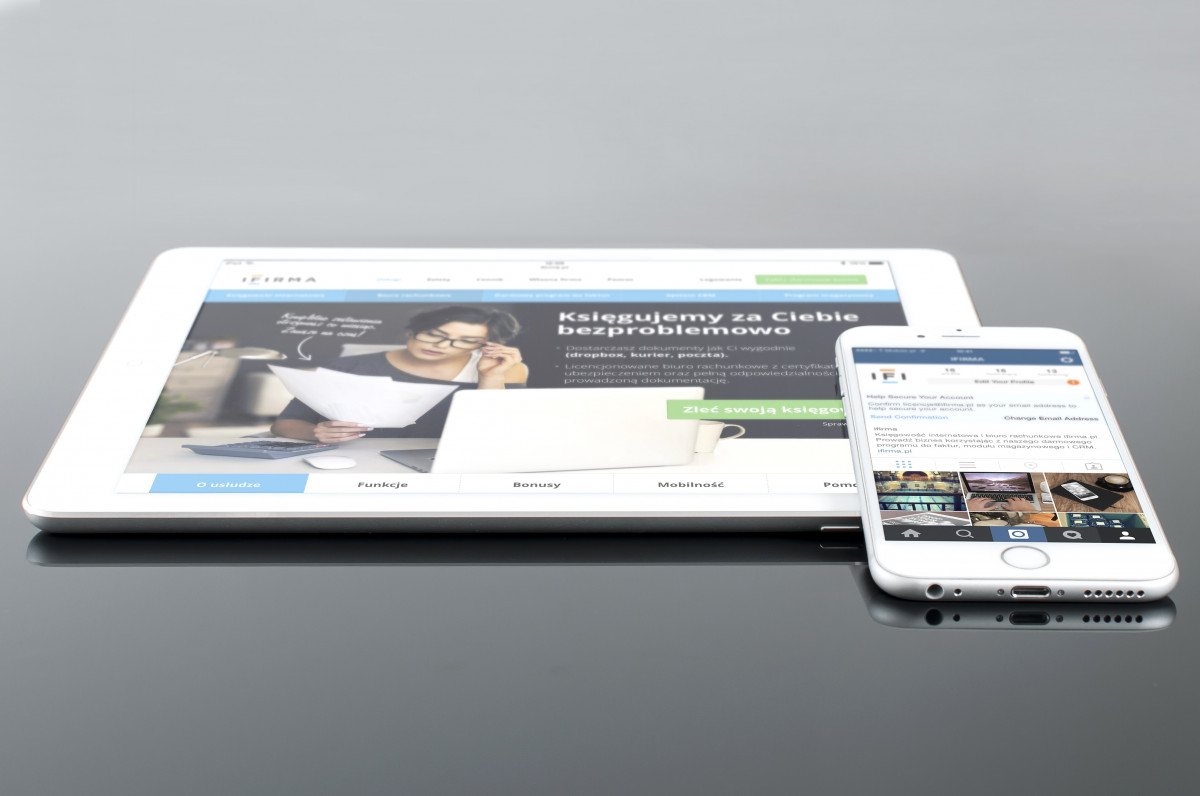
In an era where financial stability seems more like a quest than a guarantee, mastering the art of saving money is imperative. For millennials, navigating the complexities of financial planning demands more than just earning a paycheck; it requires a strategic approach to ensure long-term security and prosperity. The significance of acquiring financial literacy to make informed decisions cannot be overstressed. Equipped with effective tips on saving money, individuals can transform their financial narrative, fostering a future that is not only secure but also enriched with possibilities.
This article delves into practical strategies for millennials looking to enhance their financial well-being. From the essential practice of tracking expenses and adopting the 50/30/20 rule for budgeting to maximizing employee benefits and cutting back on unnecessary subscriptions, these tips are designed to pave the way for significant savings. Additionally, it highlights the importance of making smarter choices in everyday life, such as cooking at home more often, using credit cards wisely, shopping smarter, and exploring innovative options like house hacking. By incorporating these tips into their financial planning, millennials can build the foundation for a future where financial constraints are minimized, and saving money becomes a well-integrated part of their lifestyle.
Understanding the importance of expense tracking is crucial for millennials striving to manage their finances effectively. Regularly monitoring where money is spent not only provides a clear picture of financial habits but also highlights potential areas for savings. It’s reported that only 49% of Canadians actively use a budget, with many avoiding it due to perceived complexity or time constraints 1.
Methods for Tracking Expenses
Millennials have various tools at their disposal to track their spending efficiently:
- Manual Tracking: For those who prefer a hands-on approach, carrying a notebook or logging each transaction in real-time on a phone app like Goodbudget can increase awareness of spending patterns 2.
- Digital Tools: Apps such as Mint automatically categorize expenses and link directly to bank accounts, providing a hassle-free way to monitor finances. These apps often offer features like budget reminders and spending alerts to keep users on track 2.
- Spreadsheets and Templates: Some individuals might opt for creating custom Excel spreadsheets or downloading budget templates online. Setting regular intervals, whether weekly or monthly, to update these can help maintain a disciplined approach 2.
Using Expense Data to Inform Financial Decisions
By consistently tracking expenses, millennials can make informed decisions that align with their financial goals. This practice aids in identifying unnecessary expenditures and reallocating funds towards more significant investments like retirement savings or debt repayment. Moreover, understanding spending trends can help in adjusting budgets to better suit changing financial situations 2 3.
Understanding the 50/30/20 Budget Rule
The 50/30/20 rule simplifies budgeting by dividing post-tax income into three categories: 50% for needs, 30% for wants, and 20% for savings or debt repayment. This method, popularized by U.S. Senator Elizabeth Warren, helps individuals balance essential expenses with financial goals 4.
Implementing the Rule in Your Finances
To apply the 50/30/20 rule, one must first calculate their after-tax income and then categorize monthly expenses into needs, wants, and savings. Essential needs should not exceed 50% of the income and include items like rent, utilities, and groceries. Wants, which are non-essential, should take up 30%, covering costs like dining out and hobbies. The remaining 20% is allocated towards savings and paying off debts, ensuring future financial stability 54.
Adjusting the Rule to Fit Your Situation
While the 50/30/20 rule serves as a strong foundational guideline, it may require adjustments based on personal circumstances such as income levels and living costs. For instance, those in high-cost living areas might need to allocate more than 50% to needs. Similarly, individuals with significant debt might need to prioritize more than 20% of their income towards debt repayment. It’s crucial to tailor the budget percentages to better align with one’s financial situation and goals 54.
Maximize Your Employee Benefits
Understanding your benefits package is crucial for maximizing your total compensation. Employers offer a variety of benefits, including health insurance, life insurance, and retirement programs, giving employees control over many aspects of their compensation 6. Health benefits are particularly valuable as they reduce out-of-pocket costs for medical care 6.
Taking advantage of 401(k) matching
One of the most significant benefits an employer can offer is 401(k) matching, which is essentially free money. Many employers match contributions up to a certain percentage of an employee’s salary, typically between 3% and 6% 78. By contributing enough to get the full match, employees can double their investment instantly, enhancing their retirement savings significantly 789.
Utilizing health savings accounts (HSAs)
HSAs offer triple tax advantages, making them an excellent tool for future financial planning. Contributions are made pre-tax, growth is tax-free, and withdrawals for qualified medical expenses are also tax-free 10. Employers often contribute to HSAs, further boosting the potential savings 10. Starting to contribute to an HSA early can significantly increase the funds available for healthcare costs in retirement 10.
Cut Back on Unnecessary Subscriptions
Identifying Unused Subscriptions
Millennials often find themselves subscribed to numerous services, from streaming platforms to fitness apps, which can silently drain their financial resources. A practical first step is to take an inventory of all active subscriptions, including those that might have been overlooked or forgotten. This process is made easier with apps like Truebill, which provide a comprehensive overview of recurring payments by accessing one’s bank accounts 11. By identifying these, individuals can pinpoint which services are truly essential and which are merely adding to their monthly expenses without adding value.
Negotiating Better Rates
Once unnecessary subscriptions are identified, the next step is to negotiate better rates for those that are deemed essential. Many people don’t realize that subscription costs are not set in stone. For services like cable and cellphone plans, it’s often possible to negotiate lower rates simply by calling and requesting a better offer, especially when armed with competitive rates from other providers 12. This tactic can also apply to other recurring services like car insurance and credit card interest rates, potentially leading to significant savings 12.
Finding Free Alternatives
In addition to cutting out unnecessary subscriptions and negotiating better rates, seeking free alternatives can further reduce monthly expenses. For instance, instead of paying for multiple streaming services, individuals might rotate their subscriptions or take advantage of free trials offered by these platforms 13. Additionally, libraries offer a vast array of free resources, including e-books, streaming services, and more, which can replace costly subscriptions 13. By exploring these options, millennials can enjoy similar benefits without the recurring financial burden.
The Financial Benefits of Home Cooking
With the rising costs of dining out, more Americans are turning to their kitchens for mealtime solutions. Recent data shows a significant price increase in eating out, with restaurant prices climbing by approximately 5.1% annually, compared to just 1.2% for groceries 14. This trend is prompting a shift, with 68% of Americans opting to cook at home to save money 14. Moreover, the average diner now spends over $450 annually on tips alone, an expense easily avoided by dining in 14.
Meal Planning and Prep Tips
Effective meal planning and preparation can lead to substantial savings and enhanced nutritional intake. By planning meals ahead and shopping based on sales and pantry contents, individuals can reduce impulse buys and minimize food waste 1516. Batch cooking, or preparing large quantities of food at once, not only saves time but also ensures that there are always home-cooked meals ready, decreasing the temptation to order takeout 16. Additionally, using tools like slow cookers or Instant Pots can simplify the cooking process, making it easier to resist the convenience of fast food 16.
Balancing Convenience and Cost-Effectiveness
Incorporating simple, nutritious meals into daily life doesn’t require sacrificing quality or taste. Dishes such as stir-fries, soups, and casseroles can be both economical and satisfying 16. For those looking to cut costs further, opting for plant-based meals several times a week can be beneficial since meat often represents one of the largest grocery expenses 16. Moreover, making coffee and meals at home can prevent the hefty accumulations of spending at cafes and restaurants, which can add up significantly over time 16.
Choosing the Right Credit Card
Selecting the appropriate credit card is crucial for maximizing benefits tailored to individual spending habits. For those who frequently dine out or travel, specific cards offer enhanced rewards in these categories. Conversely, for flexible spenders, the Citi Custom Cash card adapts to top spending categories each billing cycle, making it ideal for those whose expenses vary 17.
Maximizing Rewards and Cashback
To fully leverage the advantages of cash-back credit cards, understanding the card’s reward structure is essential. Cards like the Chase Freedom Flex offer rotating bonus categories that can significantly increase cash-back earnings on up to $1,500 in purchases quarterly, after which the cash back rate returns to 1% 17. Additionally, combining a flat-rate card like the Citi Double Cash, which gives 2% back on all purchases, ensures rewards on non-bonus category spending 17.
Avoiding Credit Card Debt
Maintaining a low credit utilization rate is key to avoiding high-interest debt and improving credit scores. Experts recommend keeping the utilization under 30% to avoid signals of financial distress. Additionally, paying off balances in full each month prevents interest charges from negating the benefits of earned rewards 18. For those struggling with existing debt, transitioning to cash and limiting credit usage can help manage and reduce balances more effectively 19.
Comparison Shopping Techniques
Millennials prioritize authenticity and transparency in their shopping experiences, preferring brands that communicate in a relatable and honest manner 20. They often base their purchasing decisions on how businesses are perceived rather than solely on product quality 20. This demographic is known for its diligent research before making purchases, frequently reading reviews and seeking recommendations from their social network 20.
Using Coupons and Cashback Apps
Coupons and cashback apps are invaluable tools for savvy shoppers, offering significant savings on a wide range of products and services 2122. These apps, such as Rakuten and Capital One Shopping, partner with thousands of retailers to provide the best deals and rewards 22. Millennials can maximize their savings by combining coupons with cashback offers, ensuring they get the best value for every dollar spent 21.
Timing Your Purchases for Maximum Savings
Understanding the best times to make purchases can lead to substantial savings. Millennials are advised to plan their shopping around major sales events and seasonal discounts 23. For example, buying electronics during Black Friday or household items during Labor Day sales can be particularly cost-effective 23. Additionally, keeping an eye on monthly or seasonal trends for specific items can further enhance savings opportunities 24.
Understanding House Hacking
House hacking involves purchasing a property and renting out parts of it while residing there. This strategy can range from renting out a room in a single-family home to owning a multifamily property where the owner lives in one unit and rents out the others 25. It’s a practical way for homeowners to generate passive income by making use of their existing property.
Potential Benefits and Drawbacks
The benefits of house hacking include financial gains such as covering mortgage payments through rental income, potential property appreciation, and the ability to build wealth more quickly 25. It also offers the advantage of lower down payments and favorable loan options typically reserved for owner-occupied properties 2526. However, the role of a landlord comes with responsibilities like maintenance and dealing with tenant issues, which might introduce potential challenges and additional work 25.
Getting Started with House Hacking
To begin house hacking, one should assess the type of property that best suits their circumstances, whether it’s a single-family home with extra rooms or a multifamily unit 2526. Preparing the property for tenants is crucial, involving renovations and ensuring the space is both functional and appealing 25. Prospective house hackers must also be prepared for the legal aspects of renting, including understanding landlord-tenant laws and properly screening tenants to ensure reliability and compatibility 2526.
Conclusion
Throughout this article, we’ve explored a variety of actionable tips and strategies aimed at empowering millennials to achieve greater financial stability and savings. From the absolute necessity of tracking expenses and adopting budgeting techniques like the 50/30/20 rule, to leveraging employee benefits, cutting unnecessary costs, and exploring innovative opportunities like house hacking, the guidance provided seeks to equip readers with the knowledge to navigate their financial journey effectively. Emphasizing smart financial habits such as cooking at home, using credit cards wisely, shopping smarter, and the potential benefits of house hacking has painted a comprehensive picture of how to manage one’s finances in a balanced and forward-looking manner.
The importance of adopting these strategies cannot be overstated, as they collectively contribute to a more secure financial future, enabling millennials to not just survive, but thrive in today’s economy. By integrating these practices into their daily lives, readers are encouraged to consider their long-term objectives, adjust their spending habits accordingly, and remain vigilant about their financial health. This approach not only fosters financial literacy and independence but also opens up avenues for wealth accumulation and a life free from the constraints of financial stress. As we conclude, let the insights and recommendations serve as a catalyst for positive change, inspiring further exploration, and action towards achieving personal financial goals.
FAQs
What does the 70/30 rule entail in managing personal finances?
The 70/30 rule is a budgeting strategy where you spend 70% of your income on living expenses, save 20%, and donate 10% to a charity or religious organization. This approach not only helps in saving a significant portion of your income but also contributes to charitable causes.
Can you explain the 50/30/20 budgeting rule?
The 50/30/20 rule is a financial guideline that suggests dividing your income into three categories: 50% for necessities, 30% for discretionary items or wants, and 20% for savings. This method helps in balancing essential expenses with leisure spending and savings.
What is the 30/30/30/10 saving strategy?
The 30/30/30/10 rule is a financial planning model where you allocate 30% of your income to living expenses, another 30% to retirement savings, 30% to other investments, and the remaining 10% for unforeseen expenses. This structured approach aids in comprehensive financial planning and preparedness for unexpected needs.
How can millennials effectively save money?
Millennials can enhance their savings by investing in the stock market, utilizing ladder certificates of deposit (CDs), or opening high-yield savings accounts. Additionally, contributing to retirement accounts like 401(k)s or IRAs is advisable for securing long-term financial growth and stability.
References
[1] – https://www.koho.ca/learn/budgeting-for-millennials/
[2] – https://www.mitmclub.ca/primary-blog/the-importance-of-budgeting-and-expense-tracking-for-millennials
[3] – https://www.linkedin.com/pulse/personal-finance-management-strategies-millennials-gen-rajpurohit-lc28e
[4] – https://www.investopedia.com/ask/answers/022916/what-502030-budget-rule.asp
[5] – https://www.citizensbank.com/learning/50-30-20-budget.aspx
[6] – https://www.atsinc.com/blog/careers/employee-benefits-packages-how-to-understand-and-choose
[7] – https://www.thebalancemoney.com/understanding-your-employee-benefits-2386304
[8] – https://www.enrich.org/blog/how-to-get-more-younger-employees-to-invest-in-their-401k/
[9] – https://windgatewealth.com/millenials-the-diy-generations-take-on-401ks-how-do-you-compare/
[10] – https://www.fidelity.com/learning-center/smart-money/HSA-in-your-20s-and-30s
[11] – https://www.wired.com/story/6-apps-cancel-subscriptions-save-money/
[12] – https://www.washingtonpost.com/technology/2023/06/22/organize-subscriptions/
[13] – https://www.washingtonpost.com/technology/2022/03/21/free-digital-subscriptions/
[14] – https://www.dailypress.net/life/features/2024/05/cooking-at-home-beat-the-rising-cost-of-eating-out/
[15] – https://www.lindasstudy.com/post/cooking-for-millennials-a-guide-with-tips
[16] – https://www.savingadvice.com/articles/2024/05/28/10138572_12-ways-millennials-can-save-money-by-eating-at-home-more-often.html
[17] – https://thepointsguy.com/credit-cards/how-to-maximize-cash-back-credit-card/
[18] – https://www.washingtonpost.com/business/2024/05/22/credit-limit-max-pay-off-help/
[19] – https://www.newyorklife.com/articles/avoid-being-young-and-in-debt
[20] – http://microdinc.com/blog/tips-get-millennials-shopping/
[21] – https://www.youtube.com/watch?v=iikqAkzuiAc
[22] – https://www.thepennyhoarder.com/save-money/coupon-and-cash-back-apps/
[23] – https://www.nerdwallet.com/article/finance/what-to-buy-every-month
[24] – https://www.bankrate.com/banking/savings/the-best-time-of-year-to-buy-everything/
[25] – https://www.quickenloans.com/learn/house-hacking
[26] – https://learn.roofstock.com/blog/house-hacking













